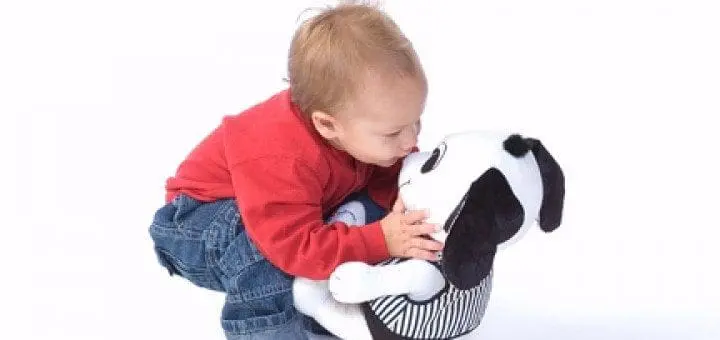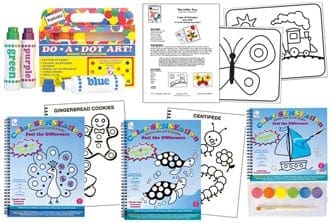Special Needs Toy Buying Guide: Answering Many of the Questions About Buying the Right Toy.

PlayAbility Toys – Special Needs Toy Buying Guide
What toy will be best for my child? What are the safety considerations I should be aware of? What features should I look for in a toy? Where do I find toys that will be appropriate for my child? These are only a few of the questions often asked by parents, family members, or friends of children with special needs. Toy buying for a child with special needs can be a frustrating experience. You want the toy to be right for the child, to be fun, to engage, to promote growth, yet you need to recognize the specific capabilities and challenges that your child faces.
I have developed this guide to help parents and others understand toy-buying considerations and promote awareness of many of the questions toy buyers should ask and answer before purchasing a toy for a child with special needs.
EVALUATE THE CHILD – Every child is unique in his or her own interests, strengths, and challenges. Having a sense of your child is critical to finding appropriate toys. What is the child’s developmental level and are there physical or cognitive limitations or strengths you should consider? What are the child’s interests? What is his or her communication and social skill level? You want toys that will be SAFE AND FUN, BUT ALSO ENGAGE, STIMULATE, BUT NOT FRUSTRATE. Don’t be afraid to ask the child about his or her interests and what they like and dislike in other toys they play with.
SAFETY – Making sure a toy will be safe should always be a primary consideration. Safety involves obtaining and evaluating knowledge about the toy and the child. Is the toy age and developmental level appropriate? Does the child have any allergies or physical and cognitive limitations that would make some toys or toy features inappropriate? What is the size and weight of the toy and how does that match the child’s limitations? Does the child become fixated on particular toy features or are they likely to place objects in his or her mouth? This creates the potential for choking and ingestion of toxic materials. Small batteries are of particular concern for children with this propensity.
https://www.parentingspecialneeds.org/article/toysrus-safe-play-tips-special-needs/
Obtaining information about the toy manufacturer and retailer is also important. What is their reputation and how long have they been in business? What materials were used in the toy construction and what toxicity and other safety tests were performed on the toy? Are safety testing reports (Certificates of Compliance) available for your review? Make sure you read the instructions and labels, and understand all warnings or cautions associated with the toy.
BOTTOM LINE, YOU SHOULD TAKE THE TIME TO LEARN ABOUT THE CHILD, LEARN ABOUT THE TOY, AND LEARN ABOUT THE TOY MANUFACTURER AND RETAILER before making your purchase. A wealth of information on toy safety is available though US Consumer Product Safety Commission website.
- US Consumer Product Safety Commission website – https://www.cpsc.gov/
- CPSC Publication 281: For Kids’ Sake – Think Toy Safety – https://www.cpsc.gov/s3fs-public/281%281%29.pdf
- General Information Safety Guides – https://www.cpsc.gov/Safety-Education/Safety-Guides/General-Information/Publications-Listing
MATCH TOY FEATURES WITH THE CHILD – Many children with special needs are engaged by, and attracted to, toys that provide multi-sensory experiences. Such features might include bold contrasting colors for visual stimulation, music, chiming or other sound producing devices for auditory stimulation, multiple materials for tactile stimulation, and various scents for olfactory stimulation. However, THE TYPE AND LEVEL OF STIMULATION THAT IS APPROPRIATE IS DEPENDENT ON THE CHILD. What might be an engaging level of stimulation for one child might over stimulate another.
Toys can also be designed to promote specific types of physical activity which could benefit children with major or minor motor challenges or other physical limitations. Children with communication and social challenges would profit from toys and games that PROMOTE GRADUALLY INCREASING LEVELS OF INTERACTION. You also should consider some basic characteristics of the toy. Will the child be able to effectively activate and operate the toy? Is the size and weight of the toy appropriate for the child and your home? Think about where the child will play with the toy and where you will store it? How will you clean the toy and will it be easy to maintain?
Taking into consideration the child’s developmental level and age is also critical. Does the toy match the child’s developmental level and is it age appropriate? Although you should try to match the developmental level of the child with the toy features, be careful to not buy a toy that may be developmentally appropriate but could embarrass or lower self-esteem. IF A CHILD IS EMBARRASSED BY A TOY THAT IS NOT AGE APPROPRIATE, HE OF SHE WILL NOT WANT TO PLAY WITH IT.
Focusing on the child is critical to successful toy buying. Understanding the child’s abilities and interests can result in a toy match that will engage the child and open the door to multiple physical and cognitive benefits and hours of fun!
SIMPLE IS OFTEN GOOD – You do not need the biggest, brightest, most technologically advanced toys to meet the needs of children with special needs. I love simple toys that are easy to play with and FOSTER IMAGINATIVE PLAY. Cost considerations are critical for many families and these toys are often less expensive and more durable than toys with multiple technical or electronic features. Simple toys are also less likely to create frustration and they often come with bold color schemes (think wood blocks) or other features that engage and stimulate. Less frustration and ease of play often translates into longer play time and increased benefits. Remember, A CHILD WILL BENEFIT FROM A SIMPLE TOY THEY ENJOY PLAYING WITH. Toys with multiple features that promote therapeutic or educational benefits can also be wonderful but KEEPING THE CHILD ACTIVE AND STIMULATED THROUGH PLAY is our primary goal.

DISCUSS AND CONSULT – Talk to your friends and other families about toys and toy features. Chances are you have contact through schools, clinics, play groups, and social media with parents of other children with special needs who have confronted many of the same questions you have. You should also consult with your child’s therapists, and teachers. They can provide help with specific toys and provide guidance on toy features that would be most appropriate for you child.
TOYS ARE IMPORTANT – I hope the information presented above will assist families in their pursuit of toys for children with special needs. The toy purchasing process for these children may require a little more effort but the payoff for your child can be enormous. Toys play a critical role in a child’s development and the fun and smiles they create are priceless.
Award winning toys for special needs kids! Autism, Blind, Hard of Hearing and more. Great toys, great prices! PlayabilityToys.com
Check Out Our Shop for Fun Learning Games and Toys
Helpful Articles
- Tips for Selecting the Right & Safe Toys
- Toys“R”Us: Safe Play Tips for Children with Special Needs
- TOY Safety?
- 9 Great Toddler & Preschooler Toys for Kids with Special Needs
- The Upside of Making Your Own Educational Toys
- Are Too Many Toys & Games Hurting Your Child’s Health?
- The Taming of the Toys



Unfortunately, I cannot share this article with colleagues or parents as one of the students pictured above is “w” sitting, which is frowned upon by all the therapists I have ever worked with.